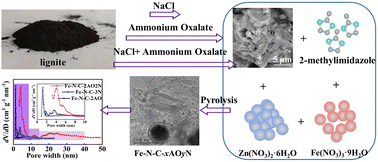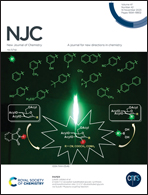ZIF-L-derived autocatalytic growth of Fe, N co-doped carbon nanotubes to form a hierarchical porous structure as an efficient oxygen reduction and oxygen evolution catalyst for Zn–air batteries
Abstract
Developing non-precious metal catalysts for the oxygen reduction reaction (ORR) and the oxygen evolution reaction (OER) is critical for Zn–air batteries. Herein, using NaCl and ammonium oxalate as templates to prepare a hierarchical porous Fe–N–C catalyst using an inorganic salt melting strategy is proposed. The prepared Fe–N–C-x catalysts have a hierarchical porous structure that increases the specific surface area, improves the exposure of a number of active sites and enhances the chance of contacting active sites. The structure change of a leaf-shaped zeolitic imidazolate framework (ZIF-L) during high-temperature pyrolysis was used to self-catalyze the growth of carbon nanotube structures, forming a structure of carbon nanotubes including Fe nanoparticles to provide additional active sites and reduce the aggregation of metal particles. From the perspective of economy and electrochemical performance, it is found that when the addition amount of NaCl and ammonium oxalate respectively is 2 g, the electrochemical performance of the ORR, OER and Zn–air batteries is better, and the preparation cost of the catalyst is more affordable. This strategy of forming hierarchical porous Fe–N–C catalysts by self-catalytic growth of Fe, N co-doped CNTs using inorganic salts provides a new design idea for the preparation of new hierarchical porous electrocatalysts.



 Please wait while we load your content...
Please wait while we load your content...